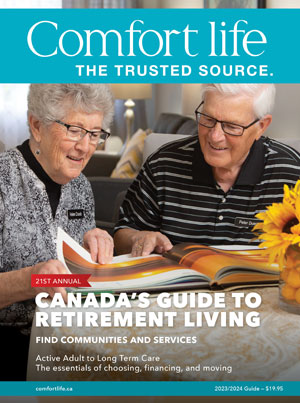What to know about this topic:
A strong loonie and declining U.S. property values have many Canadians combing through the real estate sections of American newspapers with dreams of owning their own sunny vacation home or ski get-away. According to the National Association of Realtors*, currently 11 per cent of all international U.S. home buyers are Canadians and there are compelling reasons why this number may grow.
To give an example of how the strong Canadian dollar translates favourably for potential Canadian buyers, property priced at $325,000 U.S. in January 2002, cost $519,318 Canadian. In June 2008, a $325,000 U.S. property cost $325,423 Canadian. That’s great value for the 47 per cent of Canadians buyers who currently purchase U.S. homes with cash.
Current market and economic conditions can make real estate shopping in the US irresistible, especially for snowbirds. But before taking the plunge, you should factor in the differences between our banking, legal, taxation and health care systems.
Here are some factors to consider when buying a second property in the US:
Lowering currency risk
Assuming your income is in Canadian dollars, your monthly payments could become more expensive if you borrow US funds and the Canadian dollar decreases in value.
On the other hand, if you borrow in Canadian dollars and the loonie’s value increases, you won’t have as much equity to pay off the mortgage when the time comes to sell.
Getting a mortgage
Did you know that Canadian banks don’t provide mortgages on US properties? If borrowing in Canada, you’ll need to borrow against your current home or obtain a line of credit.
If borrowing in the US, keep in mind that your credit history is limited to Canada and doesn’t apply south of the border. Canadians must make a down payment between 30 and 40 per cent of the purchase price and have 6 months’ worth of mortgage payments and property taxes in a reserve account. In the US, escrow agents are used to closing the property’s sale and mortgage at 1.75 per cent of the closing costs, which may be more expensive than in Canada.
However, a US mortgage can have advantages. For example, in the US it’s possible to get a 30-year mortgage with a fixed rate for the full term, and rates currently range from 6.5 to 7.4 per cent. Also, mortgage pre-payments carry no penalties as they do in Canada, and there are more options for renegotiating mortgages.
Becoming a US resident
If you stay in the US for 183 days of the year or longer, you are considered a US resident for tax purposes, unless you qualify to file a Closer Connection form 8840 to remain a Canadian resident. If you become a US resident, you are required to file a US tax return each year and include all your income worldwide, not just US-sourced.
Health considerations
Obtain medical insurance in Canada before you go. Costs can vary depending on your age, medical history and the length of time you’ll be away. If you take medication, bring a supply with you, along with a doctor’s note explaining why you need it.
If you have a pet, you’ll need a certificate from your veterinarian showing your pet’s clean bill of health. You’ll also need a letter confirming that you live in a rabies-free zone or proof of a valid rabies shot at least 30 days before entering the US.
For more information, visit www.investorsgroup.com.
*(Source: Profile of International Home Buying Activity in 2006-2007)
Comfort Life also offers advice on financing a retirement home.




